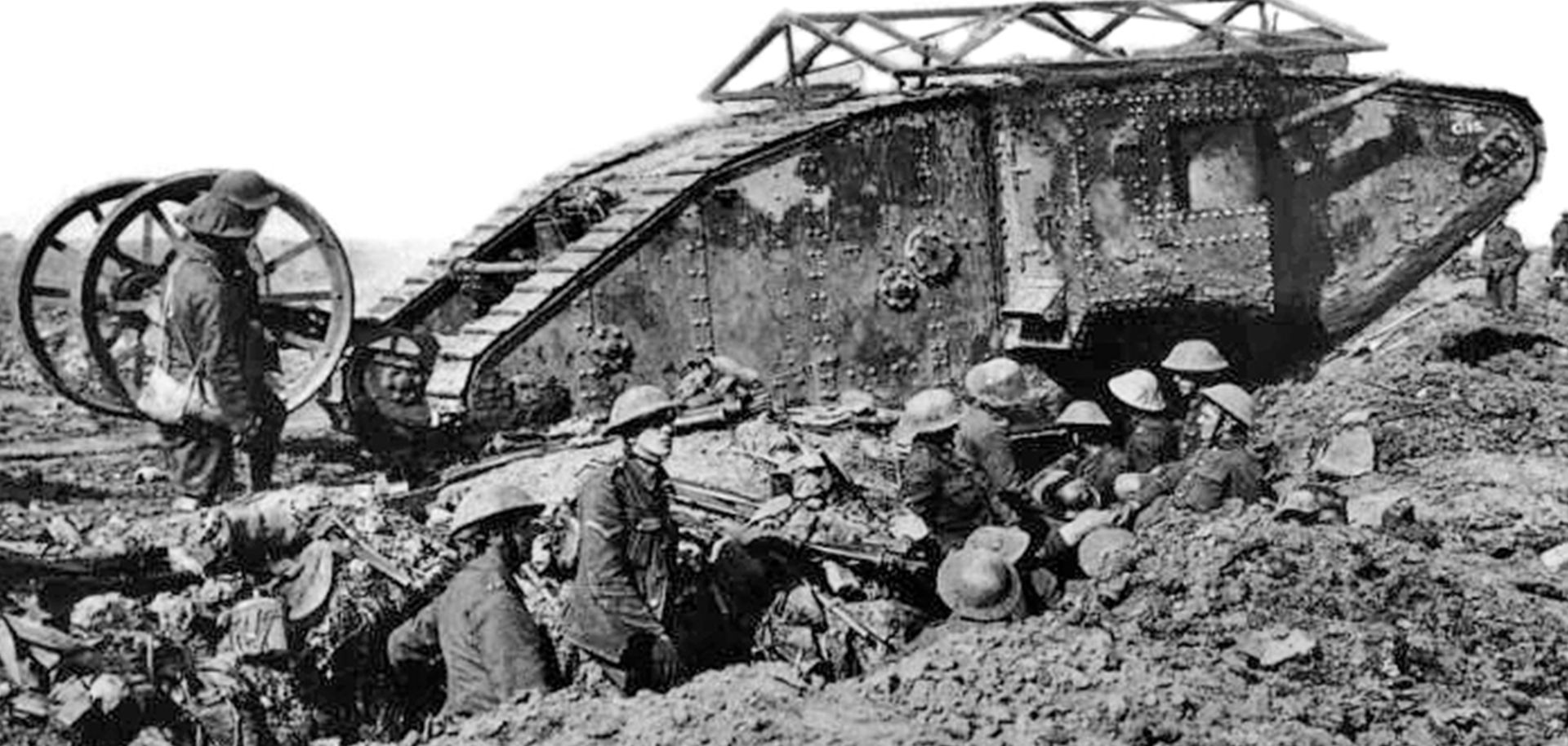ASSESSMENTS
The Dawn of the Armored Fighting Vehicle
Sep 15, 2016 | 08:00 GMT

(Wikimedia Commons)
Summary
On the morning of Sept. 15, 1916, soldiers of the German 1st Army rushed to their defensive positions between Flers and Courcelette, on the Western Front. The lifting of the Allied artillery barrage typically presaged an infantry charge, and the defenders made their machine guns ready to cut down advancing British and French troops. But this time, instead of onrushing infantry, from the smoke and mist emerged grinding mechanical contraptions, spewing bullets and shells. The Germans poured machine-gun fire onto the strange, new vehicles lumbering across the ragged mud and wire of no man's land, but the bullets had little effect. The day of the tank — a concept that would go on to define land warfare in the 20th century — had arrived.
The Battle of Flers-Courcelette was part of the ongoing Battle of the Somme in France and the first time that modern armored fighting vehicles were deployed in combat. Yet despite triumphant claims in the British press of a new weapon that would turn the tide of war by breaking the impermeable German lines, the tank's initial deployment was largely inauspicious. Those first tanks were rushed into service and woefully underpowered for the terrain they would encounter while saddled with the weight of armor. Riddled with developmental problems and manned by crews with almost no training, of the 49 original Mark I tanks deployed to France 100 years ago, 36 set off from the British line of departure Sept. 15. Only 27 made it as far as German forward positions, and a meager six trundled as far as the secondary and tertiary objectives. Mechanical failure plagued the new invention, but the concept had been proved, and successive generations of tanks and tank tactics would turn a "mobile pillbox" into a battle-winning asset.

Subscribe Now
SubscribeAlready have an account?
